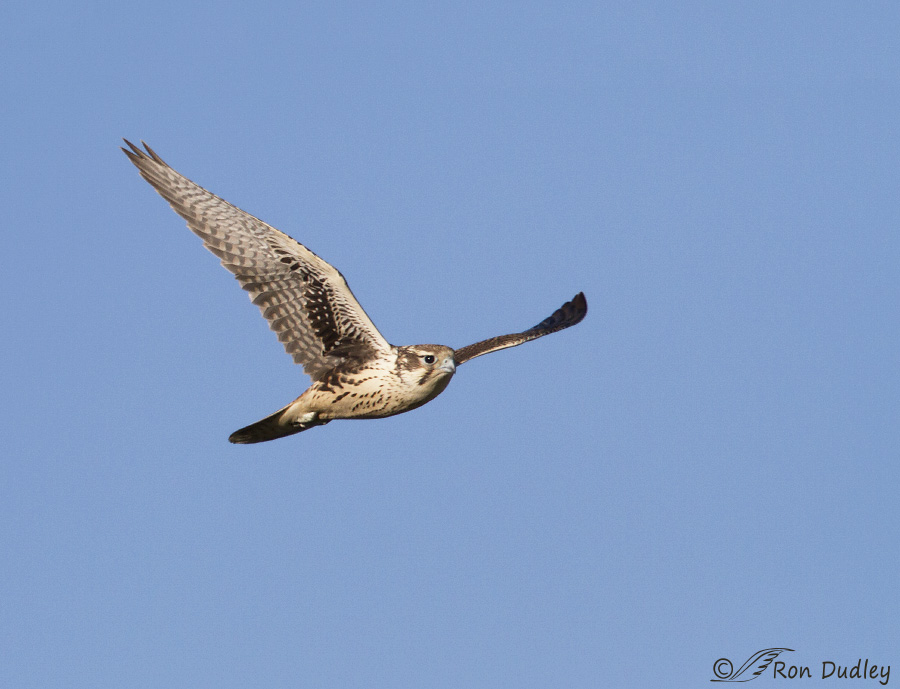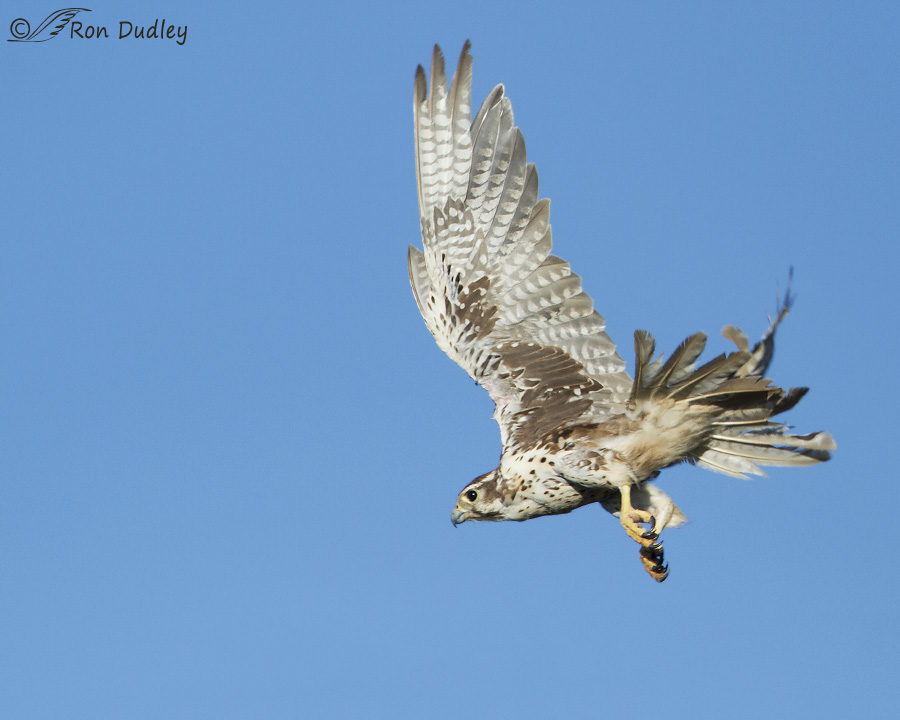Last week in Montana’s Centennial Valley I witnessed a Prairie Falcon phenomenon that was completely unexpected. In fact I’d go as far as to say it blew me away – to the jaw-dropping point.
Sadly I wasn’t able to get any great photos of any of the falcons, at least in part because I was having focusing issues with my camera but I did get a few documentary shots of individual birds and I hope to vividly describe my experience with them. This post is more about that experience than it is the images.
During my week in the valley and vicinity I drove parts of the North Road three times. That dirt road is very long, very remote and birds are usually scarce there but because of its remoteness Golden Eagles are always a possibility and they were a big part of the draw for me.
 1/4000, f/6.3, ISO 500, Canon 7D, Canon EF 500mm f/4L IS II USM + 1.4 tc, canvas added for composition, not baited, set up or called in
1/4000, f/6.3, ISO 500, Canon 7D, Canon EF 500mm f/4L IS II USM + 1.4 tc, canvas added for composition, not baited, set up or called in
But it was Prairie Falcons that stole the show.
The first time I drove the road we saw about ten of them. But when I did it again a couple of days later their numbers in the same area had literally exploded – they seemed to be almost everywhere. They were usually in small groups of 2-5 birds, typically perched on fence posts in front of me as I approached. They always lifted off just before I got within camera range and then they would play-fight in the air or circle around behind me and land on the fences again. Occasionally one or more of them would fly in close as they apparently investigated my pickup. They were a mix of adult and juvenile birds but most seemed to be juveniles.
 1/3200, f/6.3, ISO 500, Canon 7D, Canon EF 500mm f/4L IS II USM + 1.4 tc, canvas added for composition, not baited, set up or called in
1/3200, f/6.3, ISO 500, Canon 7D, Canon EF 500mm f/4L IS II USM + 1.4 tc, canvas added for composition, not baited, set up or called in
It’s difficult to accurately estimate the total number of falcons we saw because we obviously experienced some of them more than once as they hopscotched around us. But when it was all over we guessed that we had seen between 40 and 50 individual Prairie Falcons! (maybe even more) within about an hour along that approximately 7-8 mile section of the dirt road. I hesitate to report numbers like that because Prairie Falcons are usually uncommon, solitary birds and folks might wonder what I was smoking that morning. But I saw what I saw.
We were so fascinated by what we experienced and so intrigued by the possibilities of getting better images of the falcons that the following morning we decided to visit what I was now calling “Prairie Falcon Alley” a third time. What a difference 24 hours can make! This time we only saw a handful of falcons along the same stretch of road.
When I arrived home I was determined to research this incredible Prairie Falcon numbers phenomenon and see if I could find an explanation. All I was able to come up with was the following from Birds of North America Online:
- “Young disperse at approximately 65 d of age. Nest mates usually disperse within the same week; some associate with siblings and unrelated young during the first 2 wk after leaving the natal territories“
So perhaps this part of the valley was akin to a “Prairie Falcon nursery” with many nesting pairs in the area producing offspring (broods average 4-5 young) and the mostly young birds were “associating with siblings and unrelated young” just after dispersal.
I’d be interested in any other theories that might explain the phenomenon…
Ron


In 2011, I photographed 3 white tailed kite pairs that had 3 clutches within a 3 square mile area. This was a wide protected vegetative corridor that ran thru an industrial complex. Each clutch averaged 4 fledges and I saw over 40 kites flying at the same time more than once. It was a banner year for rodents and all local companies were complaining about being overrun with rodents. Kites, like barn owls are very capable of having multi clutches if prey is plentiful. I’m not aware of falcons having more than one clutch unless a nest fails. In Yosemite there are several nesting peregrines in a localized area due to favorable nesting habitat and abundant prey. My guess is that this is the situation that you saw. Sounds like it would be a great area to explore and camp in during the nesting season
Good shots in spite of your focusing issues. Must have been àwsome to watch.
Charlotte
It certainly was, Charlotte. Thanks.
Oh how wonderful.
Serendipity at its very best. And something which will stay in your mind forever.
And I love the explanation, and Laura’s expansion too. Striking out on your own as a gradual process.
You’re right, EC – it was a very memorable experience. Thank you.
What a wonderful experience. So funny you posted Prairies today, I had not read you blog before I sent off the e-mail today to you. You blog lifted my spirits since my experience today with a Prairie Falcon was not good.
I’m so sorry April. I know that sorrow well. ((((HUGS))))
From your email it sounds like you’ve had a very hectic morning with rehab calls, April. I hope the rest of them turn out better than the Prairie Falcon apparently did.
That’s a remarkable story and I can only imagine the sight that it was. Your theory sounds good to me!!!
Remarkable indeed, Carol!
Thanks Ron. Don’t see them here in Michigan. Must be family groups as mentioned in other replies. Pretty amazing photos. Diana
Thank you, Diana.
Being in exactly the right place at the right time. Isn’t that the most wonderful happening, Ron. Nature can be so grand. Thank you for sharing with us.
“Being in exactly the right place at the right time”
Exactly, Victoria. It doesn’t happen very often but when it does it’s very, very special.
Hi Ron,
Cowabunga! I once saw 6 birds “playing” together, all youngsters, and thought IT was amazing. Your experience boggles the mind. Thanks, as always, for sharing your journeys into the Field of Wonder!
Cheers,
Dick
“Your experience boggles the mind”
Dick, I can tell from that statement that you fully understand what a unique experience this was. Thanks very much.
No clue what was going on but I think it’s wonderful that you were able to see so many Prairie Falcons. And for me, the images you posted are better than documentary/
Thank you, Susan. This morning I’ve learned from someone in the know that this year has been an exceptionally good one for reproduction of both Prairie Falcons and Golden Eagles. It’s nice to get some good news on that front for a change.
A bonanza and a blessing, indeed. I’d love to see even cruddy shots that show the sheer numbers. Maybe it was a convention? You know… a Fal-con? RUNNING
Maybe it was a convention? You know… a Fal-con? RUNNING
Arwen, I was never able to get more than two birds in the same shot. Maybe I should have shot some video…
Ahhhh. Video. Yes, hindsight is 20/20, eh?
Yes, hindsight is 20/20, eh? 
Oh, and yet the images are pretty darn spectacular anyway!
Thanks, Laura.
From what I know, which is admittedly limited, I’d think that’s exactly what you were seeing–family groups, kiddos playing (and generally farting around while learning how to be prairies) before they set out on their own. And that setting out on their own is generally a process, meaning they don’t just disappear suddenly, but instead range out farther each day as their confidence builds. That’s the best explanation I’ve got, but your mileage may vary.
Interesting to see broken tail feathers along with a bent primary in the second image.
I noticed those unusual feathers too, Laura. The Prairie Falcon lifestyle is obviously hard on plumage.
I suspect your theory is correct but what blew me away was the total numbers in such a relatively small area.
WOW! Even if you couldn’t capture it all at least you got to see it! Nice shots of what you could get!
“at least you got to see it!”
The phenomenon was difficult to photograph but I’ll never forget the experience, Judy.